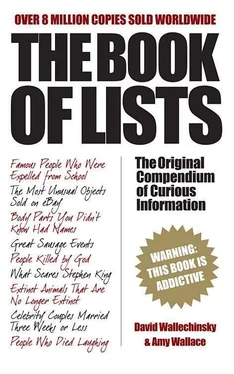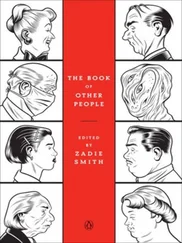THE TOMB OF KING MAUSOLUS AT HALICARNASSUS (Turkey)
King Mausolus, conqueror of Rhodes, ruled over the Persian province of Caria. His queen, Artemisia, was also his sister. When he died in 353BC, he was cremated and his grieving widow drank his ashes in wine. As a memorial to him, she determined to build the most beautiful tomb in the world at Halicarnassus, now called Bodrum. She sent to Greece for the greatest architects and sculptors, and by 350BC the memorial was complete. There was a rectangular sculptured marble tomb on a platform, then 36 golden-white Ionic columns upon which sat an architrave, which in turn held a pyramid topped by a bronzed chariot with statues of Mausolus and Artemisia. The monument survived 1,900 years, only to tumble down in an earthquake. What remains of it today is the word ‘mausoleum’.
THE COLOSSUS OF RHODES ON THE ISLE OF RHODES (in the Aegean Sea)
To celebrate being saved from a Macedonian siege by Ptolemy I, the Rhodians, between 292 and 280BC, erected a mammoth statue to their heavenly protector, the sun-god Apollo. Chares, who had studied under a favourite of Alexander the Great, fashioned the statue. The nude Colossus was 120 ft tall, with its chest and back 60 ft around, built of stone blocks and iron and plated with thin bronze. It did not stand astride the harbour, with room for ships to pass between the legs, but stood with feet together on a promontory at the entrance to the harbour. In 224BC it was felled by an earthquake. It lay in ruins almost 900 years. In AD667 the Arabs, who controlled Rhodes, sold the 720,900 lb of broken statue for scrap metal to a Jewish merchant. When the merchant hauled his purchase to Alexandria, he found that it required 900 camel loads.
THE LIGHTHOUSE ON THE ISLE OF PHAROS (off Alexandria, Egypt)
On orders of Ptolemy Philadelphus, in 200BC, the architect Sostratus of Cnidus constructed a pharos or lighthouse such as the world had not seen before. Built on a small island off Alexandria, the tiers of the marble tower — first square, then round, each with a balcony — rose to a height of 400 ft. At the summit a huge brazier with an eternal flame was amplified by a great glass mirror so that the fire could be seen 300 miles out at sea. Half the lighthouse was torn down by occupying Arabs, who hoped to find gold inside the structure. The rest of the structure crashed to the ground when an earthquake struck in 1375.
– I.W.
THE 15 LEAST POPULOUS INDEPENDENT NATIONS
Population
1. Tuvalu 11,468
2. Nauru 12,809
3. Palau 20,016
4. San Marino 28,503
5. Monaco 32,270
6. Liechtenstein 33,436
7. Saint Kitts and Nevis 38,836
8. Marshall Islands 57,738
9. Antigua and Barbuda 68,320
10. Dominica 69,278
11. Andorra 69,865
12. Seychelles 80,832
13. Grenada 89,357
14. Kiribati 100,798
15. Federated States of Micronesia 108,155
Source: US Census Bureau, International Data Base, April 30, 2004
5 PLACES WITH UNLIKELY NAMES
CAPE OF GOOD HOPE
When the Portuguese explorer Bartholomeu Dias rounded the southern tip of Africa in 1488, he found the seas so rough he called it the Cape of Storms. This epithet was hardly likely to encourage traffic through this new gateway to India, so Portugal’s King John II called it the Cape of Good Hope.
GREENLAND
Known by a singularly inappropriate epithet, this great, snow-covered island is a tenth-century example of false advertising. Eric the Red hoped to attract settlers from the more clement Iceland.
NOME
A classic geographical mistake, ‘Nome’ was miscopied from a British map of Alaska on which ‘? Name’ had been written around 1850.
PACIFIC OCEAN
Magellan had the remarkable luck of crossing this ocean without encountering a storm, so he called it Mar Pacifico — ‘the calm sea’. The Pacific in fact produces some of the roughest storms in the world.
SINGAPORE
This word derives from the Sanskrit for ‘city of the lion’. Its exact origin is a mystery, since lions are not indigenous to the region.
– R.K.R.
13 POSSIBLE SITES FOR THE GARDEN OF EDEN
‘And the Lord God planted a garden eastward in Eden… And a river went out of Eden to water the garden; and from thence it was parted and became into four heads. The name of the first is Pison: that is it which compasseth the whole land of Havilah, where there is gold; And the gold of that land is good: there is bdellium and the onyx stone. And the name of the second river is Gihon: the same is it that compasseth the whole land of Ethiopia. And the name of the third river is Kiddekel: that is it which goeth toward the east of Assyria. And the fourth river is Euphrates.’
– Genesis 2:8–14
1. SOUTHERN IRAQ
Many biblical scholars believe that the Garden of Eden, the original home of Adam and Eve, was located in Sumer, at the confluence of the Euphrates and Tigris (or Hiddekel) rivers in present-day Iraq. They presume that the geographical references in Genesis relate to the situation from the ninth to the fifth centuries BC and that the Pison and Gihon were tributaries of the Euphrates and Tigris which have since disappeared. In fact, they may have been ancient canals.
2. EASTERN TURKEY
Other students of the Bible reason that if the four major rivers flowed out of the garden, then the garden itself must have been located far north of the Tigris–Euphrates civilization. They place the site in the mysterious northland of Armenia in present-day Turkey. This theory presumes that Gihon and Pison may not have been precise geographical designations, but rather vague descriptions of faraway places.
3. NORTHERN IRAN
British archeologist David Rohl claimed that Eden is a lush valley in Iran, located about 10 miles from the modern city of Tabriz. Rohl suggests that the Gihon and Pison are the Iranian rivers Araxes and Uizhun. He also identifies nearby Mt Sahand, a snow-capped extinct volcano, as the prophet Ezekiel’s Mountain of God.
4. ISRAEL
There are those who say that the garden of God must have been in the Holy Land and that the original river that flowed into the garden before it split into four separate rivers must have been the Jordan, which was longer in the days of Genesis. The Gihon would be the Nile, and Havilah would be the Arabian Peninsula. Some supporters of this theory go further, stating that Mt Moriah in Jerusalem was the heart of the Garden of Eden and that the entire garden included all of Jerusalem, Bethlehem and Mt Olivet.
5. EGYPT
Supporters of Egypt as the site of the Garden of Eden claim that only the Nile region meets the Genesis description of a land watered, not by rain, but by a mist rising from the ground, in that the Nile ran partially underground before surfacing in spring holes below the first cataract. The four world rivers, including the Tigris and Euphrates, are explained away as beginning far, far beyond the actual site of Paradise.
6.-7. EAST AFRICA and JAVA
Since Adam and Eve were the first humans, and since the oldest human remains have been found in East Africa, many people conclude that the Garden of Eden must have been in Africa. Likewise, when archaeologists discovered the remains of Pithecanthropus in Java in 1891, they guessed that Java was the location of the Garden of Eden.
8. SINKIANG, CHINA
Tse Tsan Tai, in his work The Creation, the Real Situation of Eden, and the Origin of the Chinese (1914), presents a case for the garden being in Chinese Turkestan in the plateau of eastern Asia. He claims that the river that flowed through the garden was the Tarim, which has four tributaries flowing eastwards.
Читать дальше












